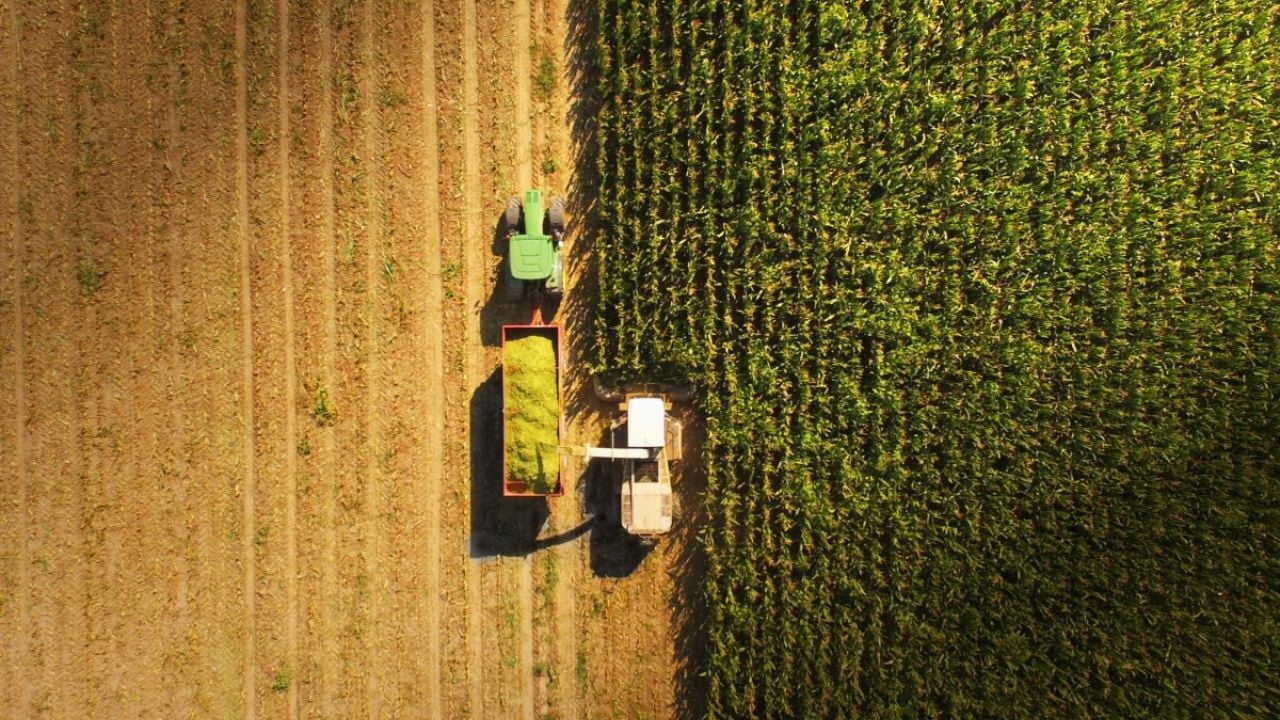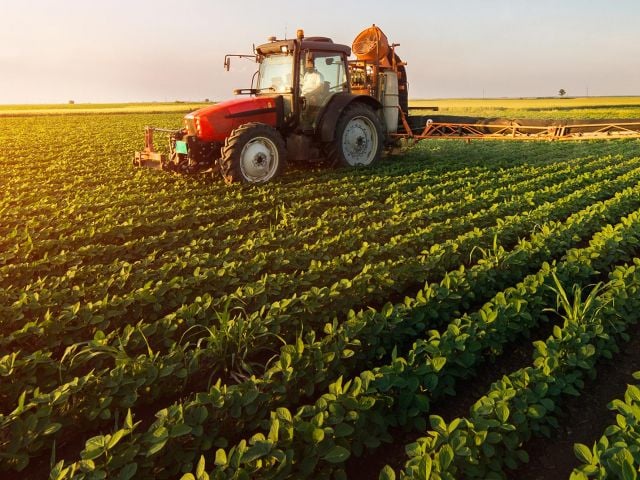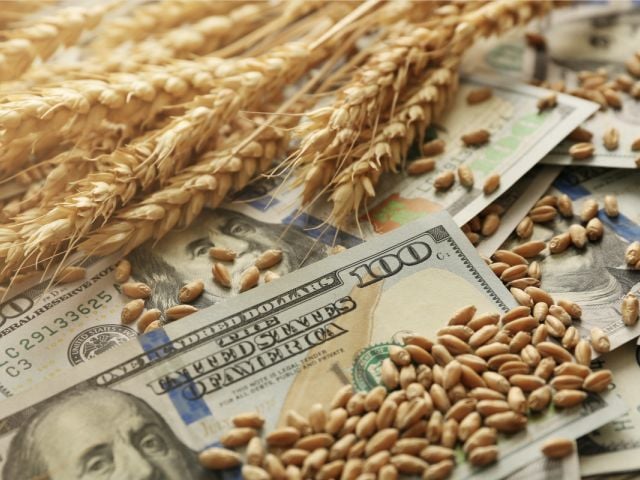
Overview
- The extreme weather caused by climate change is hurting farmers more than ever – and federal farm subsidies could help in fighting the worst impacts.
- But farm subsidies still flow to the largest producers and do little to help farmers prepare for floods, droughts and other impacts of climate change.
- Farm subsidies have become less transparent in recent years, obscuring the names of the recipients of more than $3 billion in payments.
EWG’s newly updated Farm Subsidy Database shows that federal farm subsidies between 1995 and 2021 totaled $478 billion. This huge amount of taxpayer money does almost nothing to help farmers reduce their greenhouse gas emissions or adapt to adverse weather conditions caused by the climate crisis.
Our database update also shows that farm subsidy funding still goes to the largest and wealthiest farms, which can weather the climate crisis best, and that payments are getting less transparent, obscuring who has received almost $3.1 billion in payments.
The Department of Agriculture’s subsidy funding could be used in much more useful ways that would help farmers in mitigating their emissions and becoming more resilient to hazardous weather conditions. Instead, it’s still a handout for rich landowners, city dwellers and family members of farmers. Even the USDA is benefiting, with one of its divisions receiving almost $350 million in payments.
Billions in benefits for the largest farms
Federal farm subsidies are payments made to farmers under the guise of protecting food security and weather-related risks. In reality, most farm subsidies go to commodity crops, such as corn and soybeans, which are not grown to feed people, and to the largest and wealthiest farms, which are best prepared to endure the floods, droughts and other extreme weather caused by the climate crisis.
EWG has been investigating federal farm subsidy programs since 2001. That year we created our first iteration of the Farm Subsidy Database, which tracks the names and locations of farm subsidy recipients and the amount of money they receive each year, going back to 1995.
EWG researchers update the database periodically – most recently in February 2023, with new data from 2020 and 2021. This latest iteration shows federal farm subsidies between 1995 and 2021 total $478 billion.
Throughout the past 22 years, the largest and wealthiest farms have always received most of the subsidies. Between 1995 and 2021, the top 10 percent of farm subsidy recipients that received the largest payments received over 78 percent of commodity program subsidies, and the top 1 percent received 27 percent of payments.
The top recipients are large and wealthy farms because that’s how farm subsidy programs are designed – payments are made based on acreage or production, so the farms with the most acres or most crops produced get the largest payments.
Meanwhile, the smallest 80 percent of recipients – those that, by virtue of the small size of their operations, only qualify for small payments – collectively received only about 9 percent of subsidies.
Farm subsidies getting less transparent
The latest Farm Subsidy Database update reveals that, in recent years, the USDA has become significantly less transparent about how it discloses payments, obscuring who has received some $3.1 billion.
For most of the 22 years EWG has tracked subsidies, the USDA has released the names of all farm recipients in response to our Freedom of Information Act requests. Now, at odds with that standard procedure, the agency is leaving some of the recipient names out of its responses to our requests. Specifically, when a recipient has an operating loan with any bank or other financial institution, the USDA now releases the name of the bank or financial institution, not the person’s name.
Farm subsidies are sent to the banks instead of the recipients, to help pay off farmers’ operating loans. This is not a new practice. But it is new for the USDA to give us the bank names instead of the farmers’ names. The change occurred when the Trump administration switched to a new reporting system, in 2019. The USDA claimed the move was to increase efficiency but gave no reason why the new system names banks instead of recipients. The agency has denied our appeals for the farmer names.
This gap in disclosure makes it impossible to know how many people may be getting such payments, what they’re growing, and other key information. It effectively conceals the beneficiaries of almost $3.1 billion in taxpayer dollars between 2019 and 2021.
But it also means we can garner unprecedented insight into the main lending institutions farmers use. Surprisingly, the financial institution that received the most farm subsidies was the USDA. The USDA’s Farm Service Agency, or FSA, alone got almost $350 million in farm subsidies between 2019 and 2021, more than any other financial organization.
Federal farm subsidy programs are rife with problems, such as how many individual recipient names are hidden behind elaborate farm partnerships. The programs are notorious for numerous loopholes that enable rich landowners, city dwellers and family members of farmers to receive huge amounts of money each year.
In addition, most subsidy payments go to farmers of commodity crops – not food people eat – as well as the largest and wealthiest farms and white farmers. Farmers can even get duplicate or triplicate payments.
All of these issues are very hard to fix without more transparency about who receives taxpayer dollars in the form of farm subsidies. All farm subsidy recipient names should be divulged to the public, as they were for many years.
The USDA is paying itself subsidies
Analyzing new data in our Farm Subsidy Database, EWG researchers found that $3.08 billion in farm subsidies went to 1,134 financial institutions between 2019 and 2021. This made up over 6 percent of all farm subsidies paid out in those years.
The Price Loss Coverage commodity program, or PLC, paid out the most money to financial institutions. Across all programs, the PLC made up 59 percent of payments to financial institutions, or $1.8 billion. PLC payments are triggered if crop prices are lower than expected.
The 10 financial institutions that received the most money got over $1.06 billion in payments, representing 35 percent of subsidies paid to financial institutions and 2.2 percent of payments to all farm subsidy recipients (Table 1).
The financial institution that received the most money was a division of the USDA – its FSA got $346.7 million, or 11 percent of payments to financial institutions, and just under 1 percent of all farm subsidy payments. Dairy programs were responsible for the most money sent to the FSA, with the PLC a close second program.
Table 1. The top 10 financial institutions received $1 billion in farm subsidies between 2019 and 2021.
|
Financial institution farm subsidy recipients |
Payments in 2019 |
Payments in 2020 |
Payments in 2021 |
Total payments, 2019-2021 |
Payment rank |
|
$141,761,586 |
$117,274,624 |
$87,642,554 |
$346,678,764 |
1 |
|
|
$104,376,586 |
$97,492,566 |
$34,862,577 |
$236,731,729 |
2 |
|
|
$32,725,238 |
$40,421,061 |
$18,455,648 |
$91,601,947 |
3 |
|
|
$29,026,100 |
$34,088,337 |
$12,831,367 |
$75,945,804 |
4 |
|
|
$27,208,799 |
$28,524,287 |
$14,955,586 |
$70,688,671 |
5 |
|
|
$31,218,644 |
$21,691,236 |
$11,592,718 |
$64,502,599 |
6 |
|
|
$25,420,466 |
$20,570,710 |
$9,821,304 |
$55,812,481 |
7 |
|
|
$23,458,818 |
$16,374,912 |
$6,364,211 |
$46,197,941 |
8 |
|
|
$21,662,135 |
$11,134,154 |
$5,372,002 |
$38,168,290 |
9 |
|
|
$17,729,988 |
$14,494,248 |
$5,748,971 |
$37,973,207 |
10 |
Source: EWG, from public records requests for USDA-FSA farm subsidy program data.
As the table shows, just two financial institutions, the FSA and Agrifund LLC, got $583 million – over half the money that went to the top 10 financial institutions and 19 percent of the total received by banks.
The USDA must improve transparency
Reporting subsidies by bank name conceals the people who are actually benefiting from farm subsidies, undermining the USDA’s transparency and accountability. Taxpayers and lawmakers deserve to know who gets farm subsidies and what they grow.


